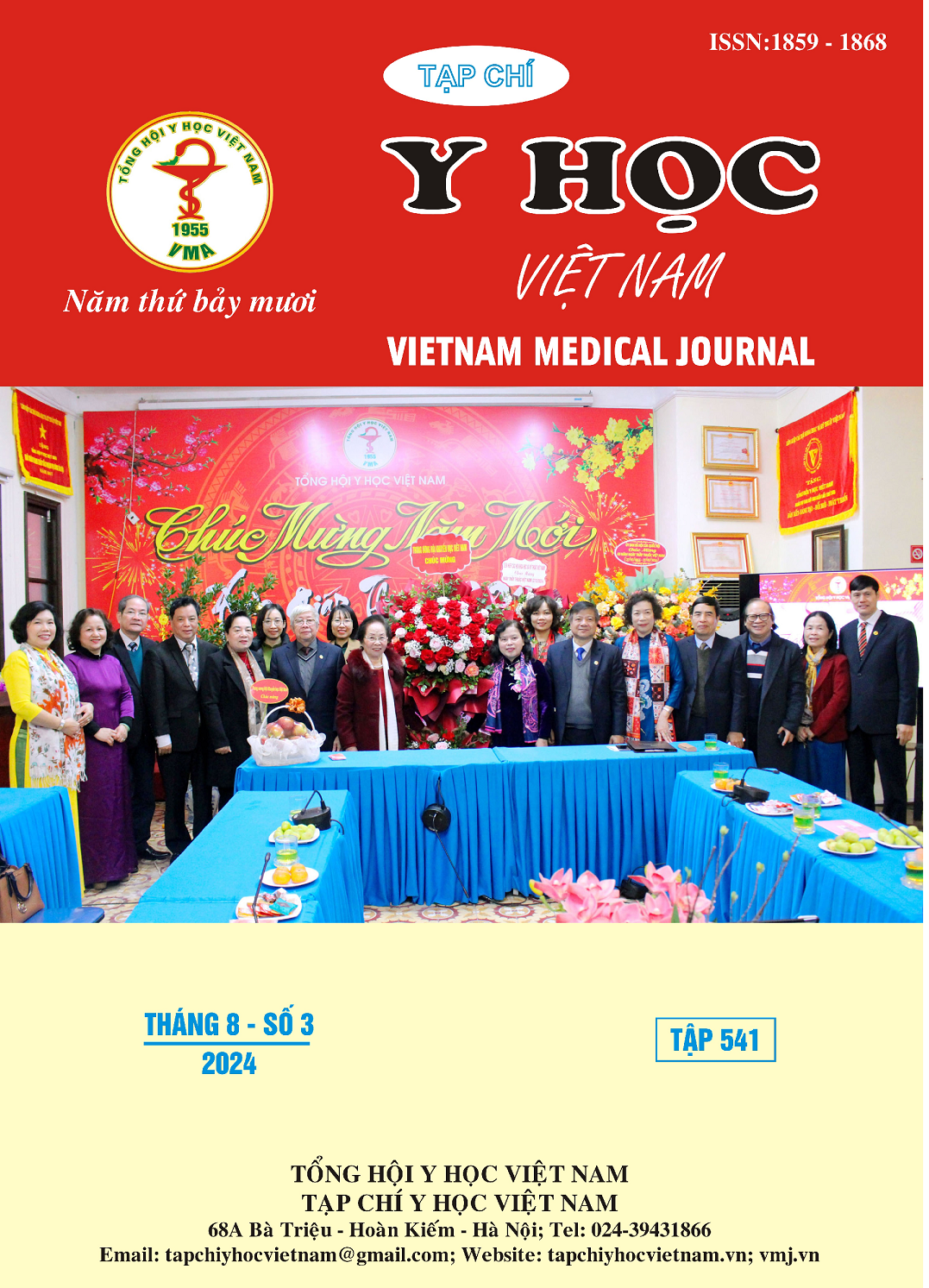CAPILLARY BLOOD GLUCOSE LEVELS IN PATHOLOGICAL NEONATES BEFORE TREATMENT AT THE NEONATOLOGY DEPARTMENT OF CAN THO CHILDREN'S HOSPITAL
Main Article Content
Abstract
Introduction: Hypoglycemia often occurs within the first few hours of life, and timely detection and treatment can minimize complications in newborns. Objective: Describe the incidence of hypoglycemia in hospitalized pathological neonates before treatment based on weight and gestational age classification, according to the early neonatal morbidity model. Subjects and Methods: This cross-sectional study described 120 neonates from October 2022 to June 2023 at the Neonatal Intensive Care Unit – Neonatology Department, Can Tho Children's Hospital. Capillary blood glucose testing was performed at the bedside at the time of admission. Results: The incidence of hypoglycemia before treatment was 34.2%, with a significant difference in hypoglycemia between the two groups treated and untreated at previous facilities (p=0.003). The incidence of hypoglycemia in preterm neonates was 86.5%, while in full-term neonates it was 13.5%, showing a statistically significant difference (p=0.002). Preterm neonates with small and large gestational age (SGA and LGA) had a higher rate of hypoglycemia compared to preterm neonates with appropriate gestational age (AGA) (p=0.004). The morbidity model of neonates with hypoglycemia before treatment in the early neonatal period included non-infectious respiratory distress (48.8%), early neonatal infection from maternal transmission (41.5%), polycythemia (24.4%), congenital anomalies (39%), indirect hyperbilirubinemia (7.3%), and birth asphyxia (2.4%). However, these differences were not statistically significant. Conclusion: Preterm neonates with large and small birth weights for gestational age have a higher rate of hypoglycemia before treatment compared to other types of neonates
Article Details
Keywords
Hypoglycemia, neonates, early neonatal period.
References
2. trần thị huỳnh như và các cộng sự. (2022), "nghiên cứu bệnh nhiễm trùng sơ sinh sớm qua đường mẹ-thai tại khoa nhi sơ sinh bệnh viện phụ sản thành phố cần thơ năm 2020-2022", tạp chí y dược học cần thơ(52), tr. 16-23.
3. Trần Thị Anh Thương, Bùi Văn Đức và Nguyễn Phú Đạt (2022), "Một số yếu tố liên quan đến hạ glucose máu ở trẻ sơ sinh tại Khoa Nhi-Bệnh viện Bạch Mai", Tạp chí Y học Việt Nam. 520(1B).
4. Deborah L Harris, Philip J Weston và Jane E Harding (2012), "Incidence of neonatal hypoglycemia in babies identified as at risk", The Journal of pediatrics. 161(5), tr. 787-791.
5. William W Hay và các cộng sự. (2018), "Nutrient delivery and metabolism in the fetus", Textbook of diabetes and pregnancy, CRC Press, tr. 34-48.
6. Nikki A Mitchell và các cộng sự. (2020), "Incidence and risk factors for hypoglycemia during fetal-to-neonatal transition in premature infants", Frontiers in pediatrics. 8, tr. 34.
7. J Mugalu và các cộng sự. (2006), "Aetiology, risk factors and immediate outcome of bacteriologically confirmed neonatal septicaemia in Mulago hospital, Uganda", African health sciences. 6(2), tr. 120-126.
8. Aanchal Saini, Bablu Kumar Gaur và Parvinder Singh (2018), "Hypoglycemia in low birth weight neonates: frequency, pattern, and likely determinants", Int J Contemp Pediatrics. 5(2), tr. 7.


